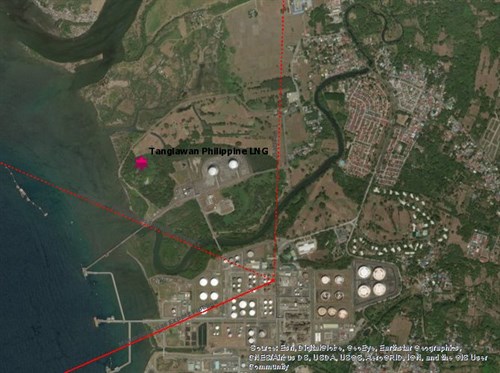Phoenix Petroleum gets green light for Philippines' first LNG terminal
MANILA (Reuters) - Philippines firm Phoenix Petroleum said it has won government approval to build the country’s first liquefied natural gas (LNG) import terminal in partnership with China National Offshore Oil Corp (CNOOC).

Phoenix, a fuel retailer, said it plans to break ground this year for the LNG regasification and receiving terminal south of the capital Manila, in a country that still relies heavily on coal as a fuel source.
The company said its Tanglawan Philippine LNG Inc unit, which will undertake the project, is partnering with a unit of CNOOC Gas and Power Group Co. Ltd., China’s largest LNG importer and terminal operator.
The LNG facility is expected to have a capacity of 2.2 million tonnes per year, with commercial operations targeted to start by 2023, Phoenix said in a regulatory filing.
The Philippines has been looking to start importing LNG to feed gas-fired power plants in Batangas, south of the capital, as domestic gas supplies from its Malampaya field are set to run out in 2024 at the earliest.
Phoenix, owned by local businessman Dennis Uy who helped bankroll Philippine President Rodrigo Duterte’s 2016 election campaign, also plans to build a 2,000-megawatt gas-fired power plant as part of the integrated project in Batangas province.
Phoenix did not say how much the LNG project would cost, but the Department of Energy (DOE) previously estimated total investment for such a facility could reach $2 billion.
Dozens of domestic and foreign companies had expressed interest in the LNG project, but only three groups, including the Phoenix-CNOOC group, were short-listed. The other two were state-owned Philippine National Oil Company and power producer First Gen Corp with Tokyo Gas.
Whether the two other groups would be allowed to build their own facilities would depend on the viability of their project proposals, DOE Assistant Secretary Leonido Pulido told Reuters.
The Malampaya gas field, which lies near the disputed South China Sea waters and is operated by a unit of Royal Dutch Shell Plc, fuels plants that supply about 40 percent of the power for the main Luzon island.
Reporting by Enrico dela Cruz; editing by Richard Pullin

- ExxonMobil halts 1-Bft3d blue hydrogen project in Texas
- Aramco and Yokogawa commission multiple autonomous control AI agents at Fadhili gas plant
- Ukraine will resume gas imports via Transbalkan route in November
- Mitsubishi to inject $260 MM into Brunei LNG project
- Freeport LNG (U.S.) on track to take in more natgas on Thursday after unit outage



Comments